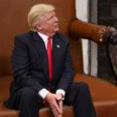For the battery experts - Which is better, using single 100Ah LiFePO4 cells or multiple 5Ah cells?
-
Recently Browsing 0 members
- No registered users viewing this page.
-
Topics
-
-
Popular Contributors
-
-
Latest posts...
-
43
UK £771 Million and Counting: Macron Under Fire Over Small Boat Crossings at UK Visit
You may be right, but it's impossible to stop all boats. After they stop and size one, the same people try again another day with another boat until it works. -
4
Search for survivors after Houthis sink second Red Sea cargo ship in a week
They have hard nut contract employees with no arms just water cannons ,fkin useless -
66
USA immigration and customs enforcement ,protecting the homeland…News
Probably some of the thousands tgat Biden / Harris can’t account for! -
46
Getting a laptop sent from Europe to Thailand - In three days!
Maybe he means the burn-in worry. -
85
Do western men know their worth?
Wow. Mrs got the painters in and bullied you into making this post? Someone hacked your account? Not your usual vibe. Not having a manopause are we? -
4
Doom scrolling ages the brain
Aka popcorn brain ,doom scrollers wil always deny it 555
-
-
Popular in The Pub





.thumb.jpeg.d2d19a66404642fd9ff62d6262fd153e.jpeg)





Recommended Posts
Create an account or sign in to comment
You need to be a member in order to leave a comment
Create an account
Sign up for a new account in our community. It's easy!
Register a new accountSign in
Already have an account? Sign in here.
Sign In Now